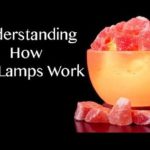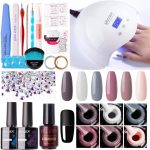Last Updated on 1 year by Francis
Hello everyone,
Today, I would like to talk about a topic that is becoming increasingly popular for treating depression – light therapy lamps. As many of you may know, depression is a mood disorder that affects millions of people worldwide. It can cause a range of symptoms, including low mood, lack of energy, and sleep disturbances. While there are many treatments available, including therapy and medication, light therapy is a simple and non-invasive alternative that has been shown to have great benefits for many people living with depression. So, let’s dive in and learn more about light therapy lamps for depression.
Contents
Understanding Light Therapy
Light therapy, also known as phototherapy, involves exposure to specific wavelengths of light to treat various conditions, including depression. The therapy works by mimicking natural sunlight, which helps regulate the body’s circadian rhythm, the natural sleep-wake cycle. The therapy is non-invasive and involves using a light therapy lamp that emits bright light, ranging from 2,500 to 10,000 lux.
How Light Therapy Works
The light therapy lamp works by stimulating the retina in the eye, which sends signals to the brain’s hypothalamus to regulate the body’s circadian rhythm. The therapy helps regulate the body’s melatonin production, a hormone responsible for regulating sleep, and serotonin, a neurotransmitter responsible for mood regulation. The light therapy lamp can be used for 20-30 minutes per day, preferably in the morning, to achieve the desired effect.
Benefits of Light Therapy
### Treating Depression
Light therapy has been shown to be an effective treatment for depression, particularly seasonal affective disorder (SAD). SAD is a type of depression that occurs during the winter months when there is less natural sunlight. The therapy has also been shown to be effective in treating non-seasonal depression, particularly in combination with other treatments such as medication and therapy.
### Improving Sleep
Light therapy can also be used to improve sleep, particularly for those experiencing insomnia or sleep disturbances. The therapy can help regulate the body’s circadian rhythm, making it easier to fall asleep and stay asleep.
### Enhancing Mood
Light therapy has been shown to enhance mood, particularly in those with depression. The therapy can help regulate the body’s serotonin levels, a neurotransmitter responsible for mood regulation.
### Improving Skin Health
Light therapy can also be used to improve skin health, particularly for those with acne or psoriasis. The therapy works by reducing inflammation and promoting skin healing.
## Choosing a Light Therapy Lamp
Key takeaway: Light therapy can be an effective and non-invasive treatment for depression, sleep disturbances, mood regulation, and skin conditions. When choosing a light therapy lamp, it’s important to consider factors like light intensity, color, and safety features. However, it’s essential to talk to a healthcare provider before starting light therapy if you have any medical conditions or are taking certain medications.
Light Intensity
When choosing a light therapy lamp, it’s important to consider the light intensity. The therapy lamp should emit at least 2,500 lux, with 10,000 lux being the most effective for treating depression.
Light Color
The color of the light emitted by the therapy lamp can also be important. Blue light has been shown to be more effective in regulating the circadian rhythm, while white light has been shown to be more effective in treating depression.
Safety Features
It’s essential to choose a light therapy lamp with safety features, such as a timer and automatic shut-off. The therapy lamp should also be certified by a reputable organization, such as the Underwriters Laboratories (UL).
Precautions
Side Effects
While light therapy is generally safe, some people may experience side effects, such as headaches, eyestrain, and nausea. These side effects are usually mild and go away on their own.
Interactions
Light therapy may interact with certain medications, such as antidepressants and antipsychotics. It’s essential to talk to a healthcare provider before starting light therapy if you’re taking any medications.
Risks
Light therapy may not be safe for everyone, particularly for those with certain medical conditions, such as bipolar disorder, skin sensitivity, and eye diseases. It’s essential to talk to a healthcare provider before starting light therapy if you have any medical conditions.
FAQs: Light Therapy Lamp for Depression
What is a light therapy lamp?
a light therapy lamp is a special type of lamp designed to simulate natural sunlight. It emits light that is similar in intensity and color to the sun’s rays, which can help alleviate symptoms of seasonal affective disorder (SAD) and other types of depression.
How does a light therapy lamp work?
Light therapy lamps work by exposing the user to bright light that simulates natural sunlight. This helps regulate the body’s circadian rhythm and reduce the production of melatonin, a hormone that makes us feel sleepy. By doing so, light therapy lamps can help improve mood, energy levels, and sleep patterns.
Who can benefit from a light therapy lamp?
Light therapy lamps are primarily used to treat people with seasonal affective disorder (SAD), a type of depression that typically occurs during the winter months when there is less sunlight. However, they can also be helpful for people with other types of depression, as well as those who suffer from sleep disorders or jet lag.
Is a light therapy lamp safe?
Light therapy lamps are generally safe when used as directed. However, some people may experience side effects such as headaches, eyestrain, or nausea. These are usually mild and go away on their own. If you experience more serious side effects, such as irritability, agitation, or manic behavior, you should stop using the lamp and consult your doctor.
How long does it take for a light therapy lamp to work?
Most people who use light therapy lamps report a significant improvement in their symptoms within 1-2 weeks of starting treatment. However, it can take longer for some people to see results. It’s important to use the lamp regularly and consistently for best results.
How do I choose a light therapy lamp?
When choosing a light therapy lamp, you should look for one that emits at least 10,000 lux of light and has a filter to block out harmful UV rays. You should also consider the size and shape of the lamp, as well as any additional features such as a timer or adjustable brightness levels. It’s always a good idea to read customer reviews and consult with your doctor before making a purchase.







